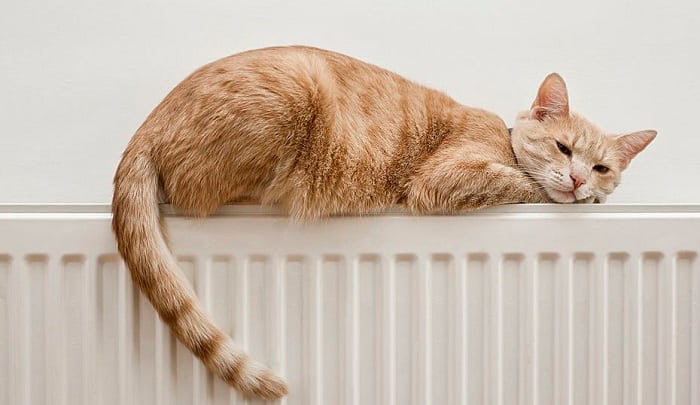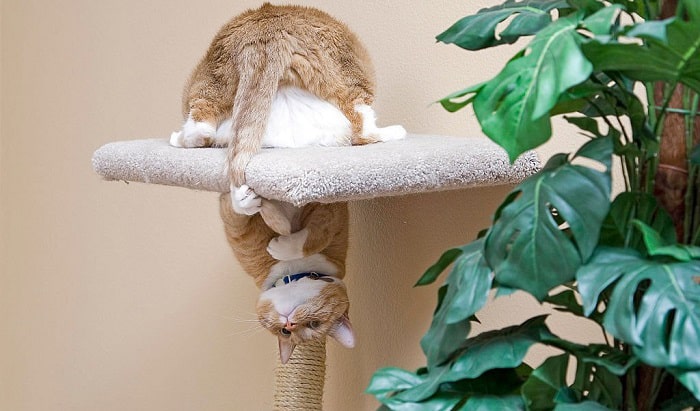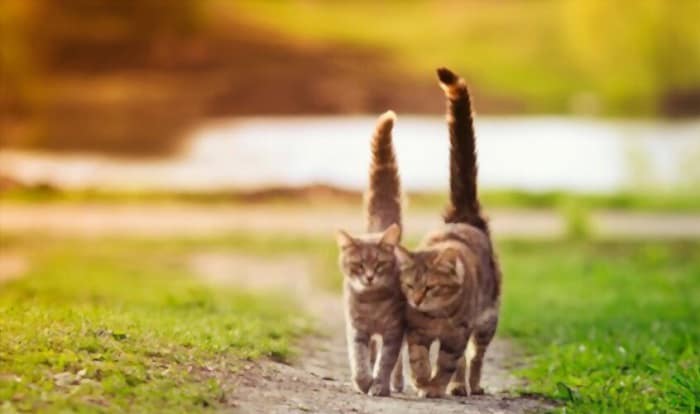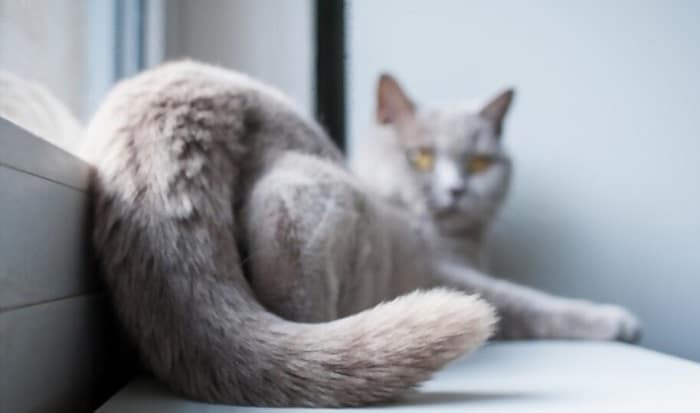Like some four-legged animals, our feline friends were created with tails. Some are long and fluffy while others are round and stubbed. But why do cats have tails? From expressing their moods to attracting attention, cats need tails to communicate amongst their kind but also with us humans. These also help them balance as they move and jump to and fro high places.
Table of Contents
Purpose of a Cat’s Tail
What do cats use their tails for? This may be a surprising question to some as it seems to be quite obvious—tails have always been parts of some animals. But to better understand our pets, here are the various reasons for having tails.
1. Cat tail for balance
It is fascinating to notice a cat tail balance its body, especially when running after or springing on prey. Their tails function as a counterbalance when they walk on thin spaces like shelves or fences or when jumping on trees and elevated areas.
Now, why do cats have long tails?
First, you have to know that the average length ranges between 9.9 inches to 11 inches, depending on the cat’s body length. Generally, it varies relative to the cat’s size and breed. Some mixed breeds have “bobs” or short and fluffy tails, while others have long, slender ones.
When a cat has a long tail, it helps with the counterbalance or hindquarter mobility. It helps them better balance on narrow surfaces, jump, and land on their feet.
However, this doesn’t mean that those with short or stumped tails cannot balance. The ability to right their reflexes or “land on their feet” is innate.
Those breeds with long tails simply make it easier for humans to understand their pets better based on how the cat positions them.
2. Indicator of Mood
Tails convey the cat’s moods and commune with their kind and with us humans. Indeed, they maximize the use of body language by expressing the cats’ feelings. Cat owners can notice these signs through the position of their tails. As cat tail muscles develop, they can voluntarily control this.
- Tail Up – when you find the tail stretched upward with a hooked tip, it can mean any of the following: the cat is confident and friendly or wants to socialize, and expects to be fed.
- Tail Quivering – when the tail shudders, the cat is feeling positive or aroused, especially when they are around their owners.
- Tail Flicking – when the tail is flicking side to side, it indicates they are positively aroused or excited.
- Tail Tossing – when the tail moves wildly and thrashes about, it heavily implies the cat is angry, stressed, or scared.
- Between their legs – a cat may rest their tail downward, and it signifies either nervousness or arousal.
- Lose and relaxed – when the tail isn’t moving, it suggests the cat is in a relaxed or normal state, unaroused or unexcited by anything and anyone.
Cats Have Tails Evolution
Domestic cats came from the lineages of Southwest Asia and Africa. In the first millennium B.C., ancient wild cats were used to kill rodents but were overall found less useful than dogs. This is why there were fewer efforts to domesticate them.
Over time, people finally discovered cats make great companions like dogs. This is when we started domesticating them, and the need to express their moods and feelings became a necessity.
Similarly, cats have an interesting tidbit on their tails’ evolution. Unlike domestic cats, wild cats can only lift their tails horizontally or rest them between their legs. As these appendages contain blood, nerves, muscles, and bone, it takes effort to keep them erect, especially when hunting.
For domestic cats, the position doesn’t matter so much in strenuous tasks like hunting. Therefore, the focus now lies on how they feel towards their immediate environment.
Do Cats Tails Grow Back?
Accidents happen either at home or outside, so your cat may experience pain in their tails. From getting trapped in a closing door to getting stepped on, tails are quite sensitive. If an injury is left untreated, it can lead to serious concerns for the cat’s health.
Now when a tail is cut off, perhaps in an accident like when a car hits a cat, the vertebrae can break. If the bones are completely crushed, the tail may have to be amputated. When this happens, tails no longer grow back. After all, there is great nerve damage already and can affect the cat’s bladder and bowel movements.
It is always best to bring your pet to the veterinarian when a serious accident happens so you can be assured that your cat receives the proper diagnosis and treatment.
Treating Minor Tail Injuries
Meanwhile, other injuries such as abrasions are usually not causes of grave concern.
- When the fur is rubbed off, and you see either the white or red on the skin, you only need to wash the area with soap and warm water gently.
- Apply antibiotic treatment before wrapping the tail with a bandage. Make sure you do this firmly but not to the point of restricting blood flow.
- Change the bandage daily or as necessary.
- In cases of lacerations, control the bleeding by wrapping the tail in a clean towel.
- Deep cuts are concerning, especially if these are self-inflicted. When the area is exposed for a long time, it can be the breeding ground for bacteria and may attract flea allergies. It is best to take your pet to the veterinarian right away.
Given the different injuries, cat owners should always be attentive to their pets. Assess the situation first before doing a home remedy or taking your feline friend to the emergency in a vet clinic. Never panic, as this can cause stress to your cat as well.
Bald Patches on the Tail
In some cases, you will experience seeing bald areas on your cat’s tail. The reasons range from fleas or other parasites to cat alopecia and a minor accident.
Depending on the actual cause, avoid shaving your cat’s tail on your own. It takes a long time for the fur to fully grow back (3-6 months for long-haired breeds and 2-3 months for short-haired ones). Additionally, shaving may not be the only correct solution to the problem.
Before taking your pet to the vet, evaluate the situation, especially if it is not grave. Some initial remedies include changing your cat’s diet, bathing them properly, changing the bathing products, and adding supplements.
However, some cases require medical attention since hair loss can also be attributed to the thyroid, hormonal, or behavioral imbalances. The veterinarian can prescribe medications for these—oral or topical, depending on the issue.
Conclusion
From gaining counterbalance to expressing their feelings, learning the reasons why do cats have tails can help us better understand them. As an extension of their spine, tails assist in their overall movement and other bodily functions.
Tails are sensitive, so cat owners must always be attentive to what the position suggests about the pet’s mood. Treat it as part of the entire cat and take great care of it to avoid any injuries or pain to your beloved pet.

I am Amy Sawy, a Doctor of Veterinary Medicine (DVM) graduate from the University of Kansas. y husband, Dr. Plummer, and I own a veterinary clinic in Phillipsburg, Kansas. In addition to my professional background, I am a devoted pet owner myself, with a household that includes dogs, rodents, and most notably, cats – a total of five felines in my home.
In 2020, I joined an organization as a professional writer, leveraging my experience and collaborating with my team to deliver the most valuable information for your cat’s care.













